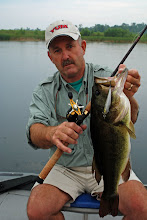


Bill Cooper
Turkey hunting experts were few and far between when I began hunting in 1972. My earliest efforts at gobbler chasing provided hours of enjoyment, but little meat for the table. Early advancements in my turkey hunting tactics came from experience in the woods and trial and error.
Newcomers to the sport of turkey hunting have more information at their disposal than ever before. The first step hunters should take is to enroll in a hunter education course. They are available in every state through fish and game departments.
Light years of mistakes can be evaded by educating oneself about wild turkeys and the techniques used to harvest them. Mark and Terry Drury of Drury Outdoors produce the best turkey hunting DVD’s and videos on the market. Their productions cover turkey hunting from the very basics to extremely advanced techniques. Grab your calls and learn to duplicate what you hear.
Camo, guns and gear are largely a matter of personal choice. Camo should match the vegetation of the area in which you will be hunting. Most hunters use a 12-gauge shotgun loaded with 3-inch magnums. Tons of gadgets are available, but remember you have to carry that stuff in and out of the woods. Don’t over do it. Buy the basics and add to your equipment list as you deem necessary. Visiting with an experienced hunter will save you a lot of headaches.
Finding a place to hunt wild turkeys is not a problem these days. Thanks to professional wildlife biologists and the work of the National Wild Turkey Federation turkeys are plentiful these days.
Missouri boasts almost 700,000 turkeys. The Show-me state also is home to 1.5 million acres of National Forest lands, mostly in the southern third of the state. If a hunter will stretch his legs, he can find turkeys here that have never heard a turkey call.

No comments:
Post a Comment